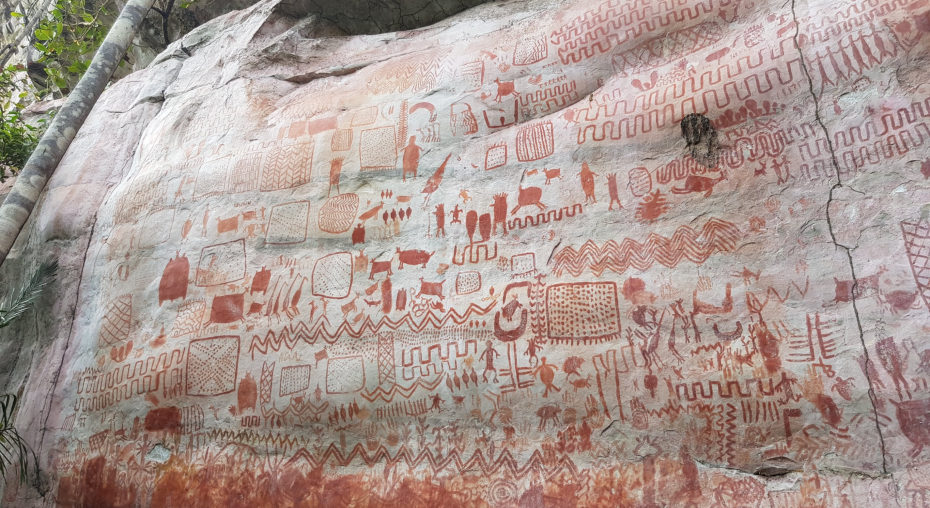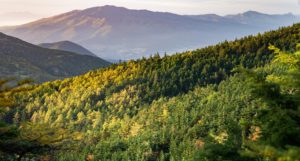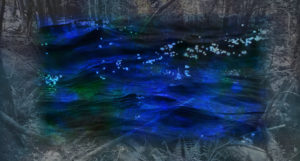New interactive stories reveal the discoveries made by University-led Amazonia archaeology project

A series of immersive stories capturing some of the remarkable findings of an Amazonia-based archaeology project have been launched by Google Arts & Culture in partnership with the University of Exeter.
The stories celebrate LASTJOURNEY, which has been researching the human adaptations and impact of the first settlers to arrive in the Colombian Amazon during the mass colonisation of South America more than 12,000 years ago.
Over the course of the project, conducted by Exeter and partners in Colombia and Europe, numerous sites containing stunning indigenous rock art were documented and recorded in Serrania de la Lindosa, in the north-west of the country.
The artwork includes depictions of what appear to be extinct Ice Age mammals and other indigenous species, scenes of hunting; and images of transformation and shamanism – all providing an insight into the worldview and cosmology of the early settlers.
The story of the project has now been told by Google Arts & Culture on its website through 360-degree images, digitised 3D models, videos, and illustrations including pictures of the panels themselves and scenes of painstaking archaeological excavation undertaken by the research team.
“The discoveries we have made during the course of our fieldwork in Colombia have been incredibly powerful,” says Professor José Iriarte, Director of LASTJOURNEY. “These paintings, dating back 13,000 years, provide us with a priceless insight into the knowledge and culture of the first Amazonian settlers, establishing the rich and ancient relationship they had with the natural world.
“But the message that the paintings of La Lindosa have for a contemporary world whose biodiversity and ecology is under threat, is equally important. That is why communication has become such a key part of this project. And now, thanks to our work with Google Arts & Culture, we can share this story with even more people.”
The La Lindosa panels were photographed and digitised by SEARCH, on behalf of Google, and funded by UKRI’s Open Innovation Platform. The videos were all shot on location with members of the research team and the supporting rural and indigenous communities.
Among the aspects of the rock art discussed include some of the more remarkable features found, including the portrayal of celestial beings and megafauna from the Ice Age; depictions of apparent cultural practice including ritualistic dancing; and what these archaeological sites mean to members of the local community.
The new immersive stories have been launched in the week of the sixth International Meeting of Amazonian Archaeology, which is being held in Colombia for the first time.
Orchestrated by the Universidad de Los Andes, the Universidad Nacional, the Universidad de Antioquia, and the University of Exeter, the triennial meeting will cover topics including the formation of the Amazonian landscape, the connections of people from other sub-regions such as the Andes and Caribbean, and the latest discoveries in ceramics and rock art.
Some of the University’s researchers engaged with LASTJOURNEY – which included members of the University’s Department of Archaeology and History, Dr Mark Robinson, Professor Alan Outram, Dr Jo Osborn, Professor Jamie Hampson, Dr Barbara Oosterwijk, and Dr Julian Garay-Vasquez – will be presenting at the conference, among almost 400 panellists from 20 countries.
“The University’s archaeological work is helping to shape key conversations in Latin America, particularly around how we empower the local communities to protect and curate these internationally important cultural sites,” adds Professor Iriarte.
LASTJOURNEY was a European Research Council-funded project, carried out by Exeter in collaboration with Universidad Nacional de Colombia; Universidad de Antioquia; Max Planck Institute; the University of Copenhagen; and Universidad de São Paulo.
The UKRI finding also covered the writing of an accompanying Painted Forest book, which was published last year.



